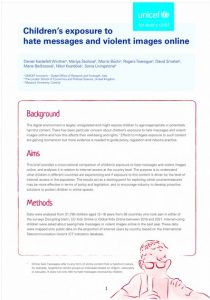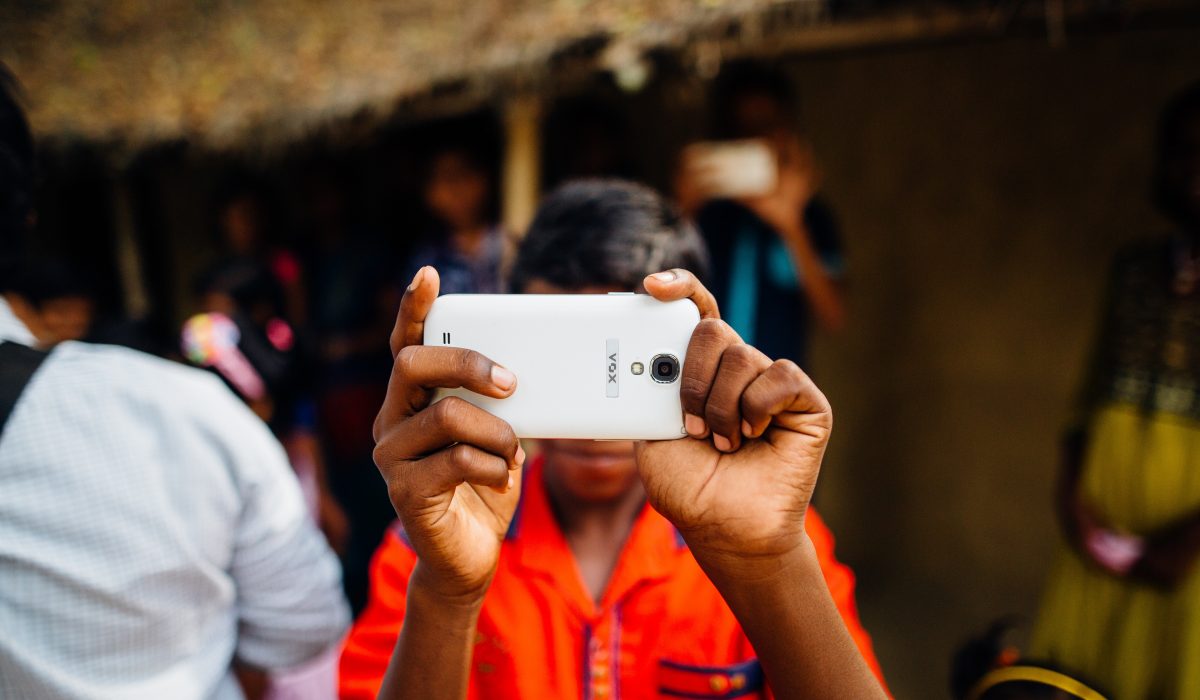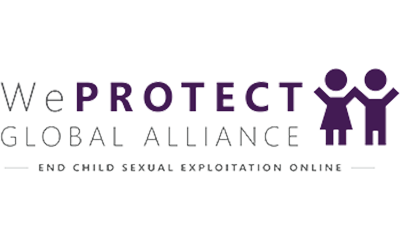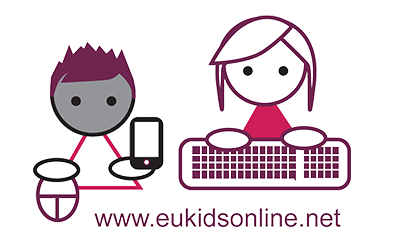 Our new research brief shows that a considerable proportion of children around the world were exposed to hate messages or violent images online in the previous year. The percentage ranges between 8% and 58% based on reports from 31,790 children aged 12–16 years from 36 countries. The data are derived from the surveys Disrupting Harm, EU Kids Online or Global Kids Online carried out between 2016 and 2021.
Our new research brief shows that a considerable proportion of children around the world were exposed to hate messages or violent images online in the previous year. The percentage ranges between 8% and 58% based on reports from 31,790 children aged 12–16 years from 36 countries. The data are derived from the surveys Disrupting Harm, EU Kids Online or Global Kids Online carried out between 2016 and 2021.
Internet access and risk amplification
The report highlights a crucial threshold – once approximately half of the population gains internet access, there is a sharp increase in children’s vulnerability to these online risks. This signals a pressing concern for countries experiencing a surge in internet accessibility.
The two risks are also interconnected – exposure to hate messages is closely linked to exposure to violent images across diverse countries. This forms distinct low-risk and high-risk country contexts, indicating the need for tailored protective measures based on national circumstances.
Figure: Clusters of countries by internet access and children’s exposure to harmful content

Still, even in countries with low internet access, the risks remain substantial. Older children, who engage more frequently and diversely with the internet, are more likely to report exposure to hate messages and violent images. We must also consider that these risks may stem from existing vulnerabilities and could manifest in conjunction with other online threats and harms. This emphasises the importance of early investment in online protection efforts during a country’s digital transformation.
Learning from success stories – the role of industry
Interestingly, some high-connectivity countries manage to maintain low exposure rates to hate messages and violent images online. Further investigation into the policies and practices of these countries, as well as the platforms they predominantly use, could unveil protective solutions. This may include existing legislation governing online content, content moderation practices, or learning opportunities that differ based on platform or language.
More than anything, the findings presented in the report highlight the importance of the role of industry and of implementing measures that address the risks directly where they are occurring – on digital platforms. Industry should use technological expertise to develop procedures and features that identify and mitigate content risks early on and remedy their impact on children. Companies have a responsibility to respect children’s rights through policy commitments, due diligence and providing remedies for adverse impacts.
Tackling hateful and violent content, and supporting children is a critical part of actively promoting children’s rights to education, information, participation, civic engagement and citizenship. As we witness the global digital transformation, safeguarding the wellbeing of children in the virtual space is not just a responsibility, it is an essential commitment to a prosperous digital future.
Image credit: Photo by Kelly Lacy from Pexels








